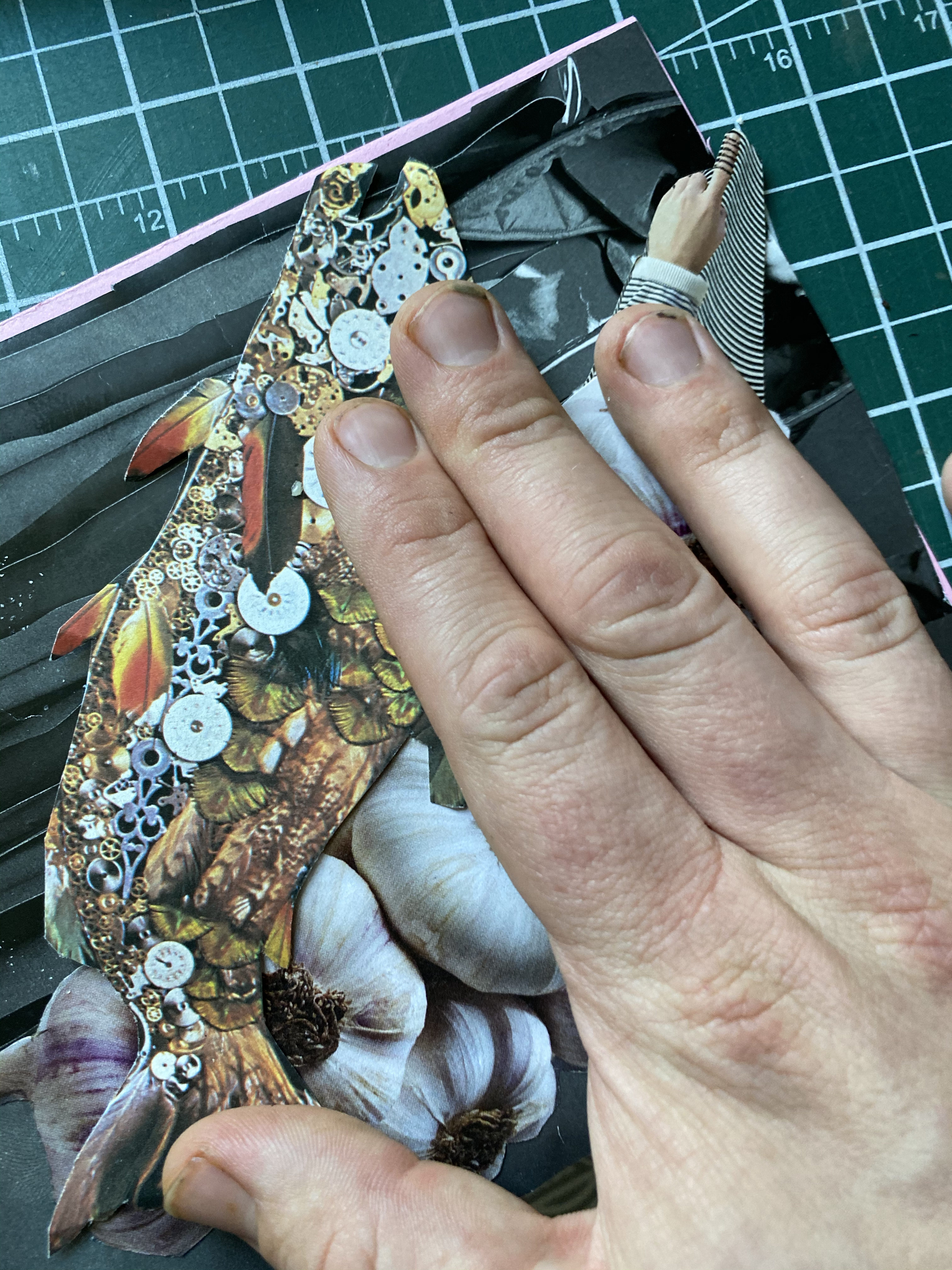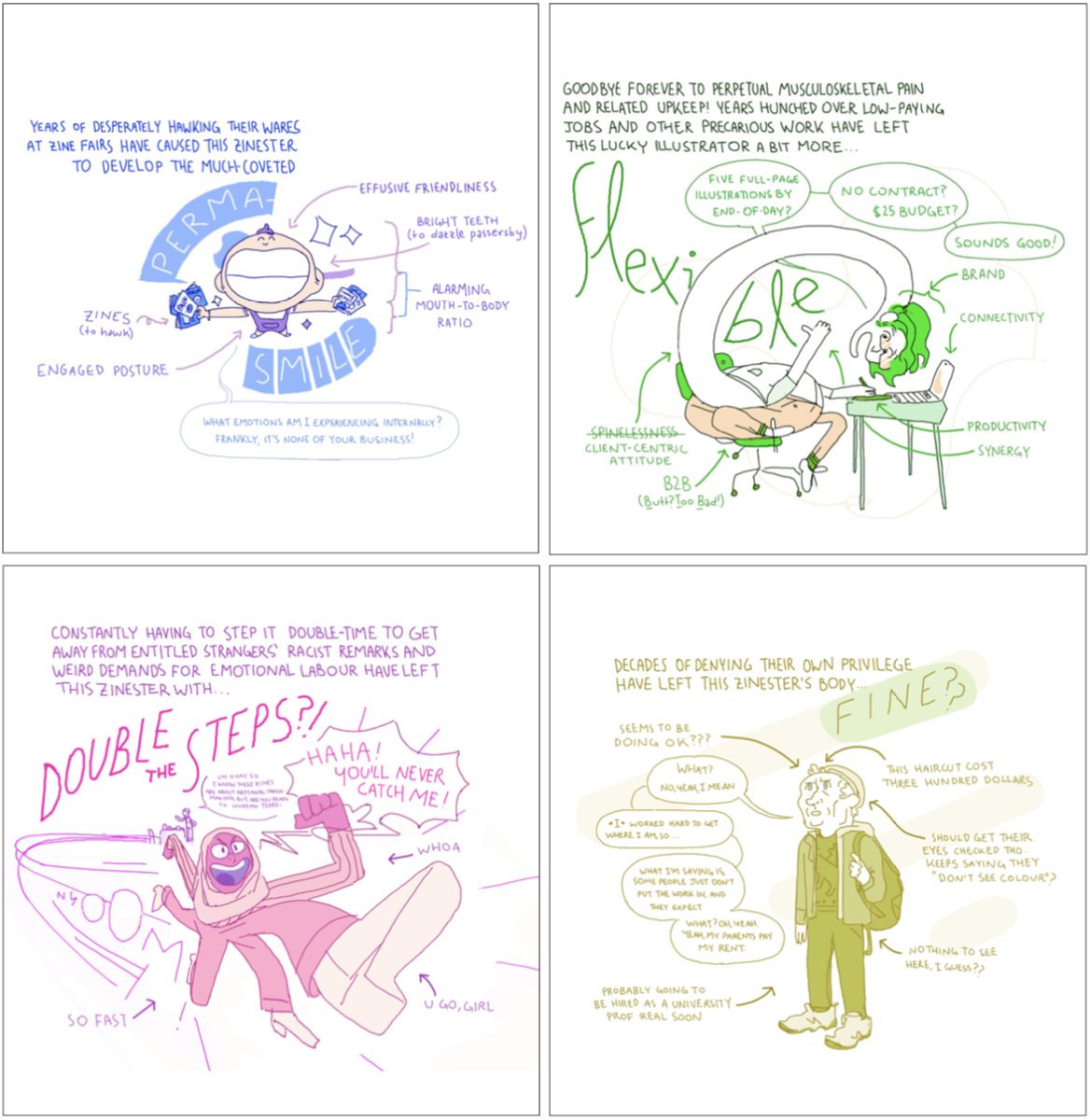A column that spotlights the tools and processes behind the craft of zines and self-publishing

I was pretty deep in a typical Instagram scroll hole when my eyes glitched over something unfamiliar. A post by Quimby’s Bookstore NYC showed a device resembling a hair dryer, but with a horizontal roller attached to the face of its boxy head instead of a tube. The caption explained that this beloved throwback Lectro-stik was a recent gift to the shop owner from none other than iconic zinester Aaron Cometbus.
Wait, a what? The Lectro-stik was the leading brand of the hand waxer, a pre-digital layout tool that applies a layer of warm wax to the back of any paper shape. This fixes the piece in place on a layout draft, but also allows for editing — if you need to reposition something, it’s easy to peel up and rearrange. Old newsrooms and ad designers alike counted on this forgiving tool as they raced to bang out ads and editorial by press time.
Whoa! As someone who is chronically non-committal, I’ve always dreaded pasting my page elements into a zine’s master spread. What if I actually can’t fit everything on this page and have to move things around? I’ve squeezed myself out of my own zine plenty of times, or otherwise regretted some gluestick-related choices and mishaps, but I have a hard time preventing such cases using planning alone. Might the Lectro-stik be the solution I’d been looking for?
I was determined to find out. I waited until I found a decent price on eBay (about $35 CAD, though they can run a bit higher) and within the week, I was waxing away. It’s great. Not only does the Lectro-stik (or any equivalent off-brand waxer) make layout way smoother and more fun, it actually has helped inspire a couple months of frequent collaging and experimentation.
On the off chance that you too might wanna wield the power of wax, I figured I’d give an introduction to the Lectro-life on the following page. Happy waxing!
1. HEAT THE WAX
Rolling wax comes in scored bars (like chocolate!), easily separated into tiles. Most of the used rollers I’ve seen online will come with a supply. To prepare for your paste-up session, you’ll first have to pull off the plastic cap and push one or two tiles into the hole in the back of the tool’s head. Make sure you replace the cap, or else waxidents are in your future for sure. Now plug the power cord into an outlet and let it warm up for 15 minutes.

2. ARRANGE YOUR PAGE
If you haven’t already, you might want to get a few layout elements ready to go, and plan your sequence a bit — backgrounds, frames and boxes, text, images and clippings. Of course, the whole point of the hand waxer is that you can rearrange, but it’s best to avoid unnecessary peeling and replacing.
3. APPLY THE WAX COAT
You’ll want a fresh piece of scrap paper underneath each time you apply the wax so it doesn’t get all over your work surface. Put your paper component face down with room on every side so you can roll edge to edge. Note that rolling either direction will produce wax, though I suggest picking one until you get the hang of it. If the wax isn’t coming out or it seems stuck, it might not have heated enough or it’s possible the axle or platen roller pieces are a bit gunked up — an easy clean, just let it cool off a bit.
Roll the wax onto the back of the paper with a light, even pressure until you’ve coated the entire surface of the piece. The cutout should remain in place on its own, but don’t let it slide much or you risk getting wax on the front.

4. PLACE THE COMPONENT ON THE PAGE
To apply, start with a far edge and gently smooth the piece outward. This will push the air out, which helps it adhere and prevents wrinkles. When the layout is final, smooth over the element with a bone folder or, my usual substitute, a big metal spoon. Some lucky Lectro-stik purchases might come with a hard plastic roller accessory to roll on different parts of the layout.

5. Need to rearrange? No problem!
Use an X-acto knife (or ya know, fingernail) to lift up the piece. Regular printer paper, card stock, magazine pages and photo paper are unlikely to rip or wrinkle, but be warned that brittle or light paper like newsprint or thin magazine pages require extra care. Be careful with thin and more intricate pieces, too, to avoid tearing.
No need to apply more wax when placing it again. If you’re struggling to pull a waxed piece up, you can loosen it by reheating the wax, though you might leave some of it behind. I kind of recreated this using a warm spoon, but a hairdryer or some other gentle heat source would work too.





